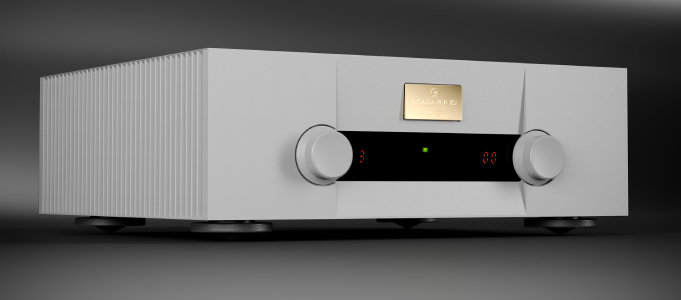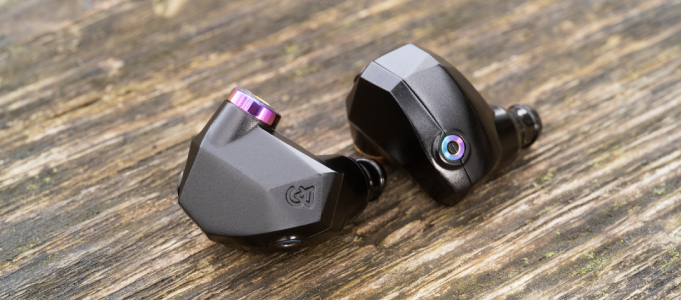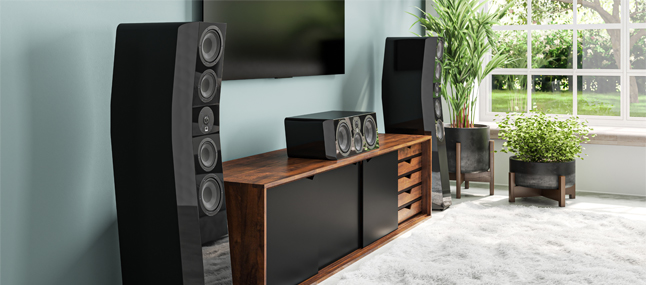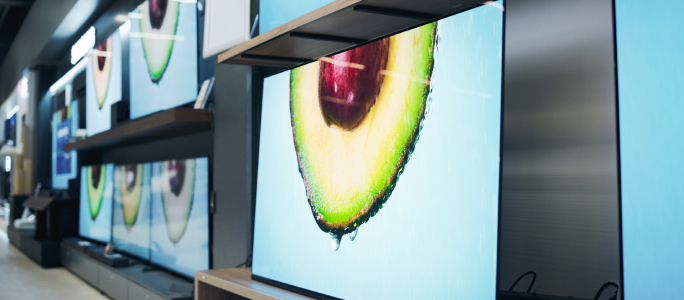Mini Adventure: The MiniDisc Story

Geoff Forgie remembers Sony's small but perfectly formed recordable disc format…
Whatever happened to Super Audio Compact Disc (SACD) and DVD-Audio (DVD-A), the now-defunct hi-res audio 'formats of the future' that launched just around the time of the new millennium? Before that came two early nineteen nineties 'wonder formats', Digital Compact Cassette (DCC) and MiniDisc (MD). Both were supposed to change the world, but they didn't. Other music media that now reside in the history books include Digital Audio Tape (DAT) from the late eighties, Elcaset from the mid-seventies, and, of course so-called 8-Track, from a few years earlier still.
It's fair to say that these 'legacy' music carriers are now little more than novelties – objects to show your friends to remind them how we used to live. Yet of all these failed formats, MiniDisc arguably stands alone as having enduring appeal. A brief look on eBay shows that people still pay good money for the hardware and software – especially the premium gear. Of course, MD is no longer a mainstream music format, but there's a small group of users who still use it on a daily basis…

Even in 2023, there's a small but passionate band of MiniDisc users who enjoy the format's convenience, immediacy and accessibility – especially in Japan. This is because, unlike the rest of the world, MD really took off there – thanks to the particular music market conditions at the time of its launch in 1992. Back then, the cost of new domestic-pressed Compact Discs was much higher than in most Western countries – the full retail price of a mainstream pop or rock release was at least twice that of new CDs in the USA. It was so expensive that the Japanese government even launched an enquiry into the matter. For this reason, every neighbourhood in every city had CD lending libraries. For roughly one-tenth of the price of a new CD, you could rent one out for a day and then copy it…
LITTLE WONDER
Recording digital audio quickly and easily was precisely what MiniDisc did best. Delivering sound quality that was reasonably close to CD, it was a great way to copy digital audio and make a more modern equivalent of mixtapes. Despite MD being the first compressed consumer digital music format, it actually sounded pretty decent by the standards of the day. And its other great strength was its small size – a 64mm optical disc sits inside a protective plastic case measuring just 70x67.5x50mm. This is enough to carry 160MB of digital audio, compared to CD's 740MB.

MiniDisc was a Sony invention which used the company's own Adaptive Transform Acoustic Coding (ATRAC) system, which employed intelligent data compression techniques designed along psychoacoustic principles. The idea was that the encoder would keep the parts of the music it thought you could hear and throw away the rest, with the compression ratio being 4.83 to 1. Although this system horrified audiophiles, it worked surprisingly well in practice.
The relative cheapness of MiniDisc meant that it appealed to many music fans – especially in Japan, where both the hardware and software cost less than in export markets. It was also much easier to use than CD and its (then) new CD-Recordable (CD-R) cousin – both in hardware and software terms. In the early nineties, CD recorders were very costly, and the recordable discs that they used weren't cheap and could only be recorded on once.

So the format was affordable, compact, user-friendly, portable and sounded better than all but the best cassette decks – and unlike analogue tape, there was no tape hiss, wow and flutter or saturation. Compared to Sony's DAT format that came a few years earlier, MiniDisc had random access – making for easy and fast track access – and generally felt far more durable. DAT could sound very good, but never caught on as a commonly used consumer audio format. The same went for Hi-Fi Video, which was also capable of superb stereo audio recording but lacked widespread appeal.
Although not a sonic world-beater, MiniDisc actually made a lot of sense to a great many people. There was, for example, always a strong demand among amateur and professional musicians for a recording format that was easy to take to a gig, easy to set up, and could play back on normal hi-fi MD machines – with no need for esoteric studio gear. Its slightly opaque sound wasn't really an issue in this application – indeed, if anything, it flattered to deceive. Its lossy nature wasn't a worry for garage bands doing their thing – indeed, it was the ideal format on which to send a 'demo tape', if you were a budding band.

Almost at the exact same time that MiniDisc was launched, Philips debuted its new Digital Compact Cassette format. DCC used serial-access tape rather than optical discs to store the music data. Like MiniDisc, it was a lossy system, using PASC encoding to reduce the amount of digital data stored on tape. At the time, the jury was out about which of the two new formats sounded better, although some thought that DCC just edged it. Yet it felt clumsy to use compared to MD, so inevitably, this half-baked format soon failed – it was the answer to a problem that the music-buying public wasn't asking. DCC was expensive, fragile and only partially backwards-compatible with the Compact Cassette format that it was supposed to replace.
ALL CHANGE
Although MiniDisc gained a strong foothold in Japan, and a fairly good one in many other countries, it was really overtaken by events. In 2004, Sony tried to improve the format with Hi-MD, which allowed full, uncompressed digital recording, but it was too little, too late. Instead, MD got caught up in a technological tsunami that was MP3 downloads, and then streaming. This started off as a niche music format popular with computer geeks, but when it became obvious that music was freely downloadable on the internet, its popularity soared. \

By the new millennium, millions of teenagers were feverishly downloading low-quality, low-bitrate MP3s from peer-to-peer file-sharing sites like Napster. Then, just a couple of years later, Apple's new iPod came and changed the world again. Suddenly, it was all about how many tracks you could fit in your shirt pocket; its gee-whizz factor left no room for questions about sound quality, as everyone seemed to want one.
Apple broke down consumer resistance to this new format by linking the iPod to the company's own new iTunes platform. The new iPod was capable of playing both MP3 and AAC files, the latter being Apple's new codec of choice; it ran similar bitrates to MD, DCC and MP3, but was arguably slightly better sounding at its top 320kbps resolution. The new iPod was so desirable that it began to push back on illegal file sharing – people started to pay to download music legally, and did so in droves.

The first iPod was a very significant moment for consumer electronics, as it bridged the gap between illegal MP3 file sharers and the (then) hugely popular portable MP3 players. It was amazing how this new technology overcame resistance to compressed digital audio, which made it possible to squeeze thousands of tracks into your pocket. MP3 remained a scourge of music as far as audiophiles were concerned, but the tide of mass public opinion was, for a while, irresistible. Poor old MiniDisc seemed about as relevant as a 78RPM gramophone record, by this time.
No sooner had legal music downloads via Apple's iTunes Store established themselves, but streaming appeared and changed everything again. A whole bunch of new streaming services popped up, with Spotify leading the way. Bitrates continued to increase from the dire-sounding 64kbps to a so-so 128k, then a decent 256k, and a quite good 320kbps. Then uncompressed audio began to catch on, at a premium price – first we got so-called 'CD quality' and then 'hi-res'. Towards the end of the first decade of the new millennium, Sony quietly dropped its latest MiniDisc machines, and that was the end for this format – after just fifteen years or so.

Every year since around 2010, CD player sales have slowly declined, and in their place, streaming services and sales of network music players (i.e. streamers) have increased. Many people have spoken about 'the death of physical media', and to an extent, this is true – although interest in retro formats remains surprisingly strong. The humble Compact Cassette has come back into fashion, with some bands releasing new material on the format – alongside vinyl, of course.

There is some evidence that this is happening to MiniDisc, too, although it's pretty limited. The price of used MD recorders, portables and the discs themselves is holding up more strongly than in a long time. By way of example, Sony's very top MiniDisc hi-fi machines are more expensive to buy secondhand now than they were when new – or pretty close. The biggest downside of investing in MD at this point is, of course, spares – most machines have laser heads that are basically 'unobtainium', so if you do buy a MiniDisc machine, then make sure it hasn't been hammered. Another bug-bear is the disc-loading mechanisms in the full-width home machines – these fail with age, trapping the disc inside. However, they are generally easy to fix, usually by fitting a new rubber pulley belt. Of course, portables don't suffer from these glitches because their loading system is so basic.

Even now, there's a wealth of MiniDisc machines on sale. Spend a few minutes browsing eBay, and you'll find home recording decks from Sony, Pioneer, Denon, TEAC, Kenwood, etc., and portables from Panasonic, Sony, Aiwa and Sharp at affordable prices. All are of decent quality, with some of the top models from Sony, such as the superb MDS-JA555ES, offering sound quality close to high-end CD players. However, this deck wasn't cheap when it was new and isn't cheap now. Generally, the later the year, the better the sound – as the ATRAC codec was constantly refined over the years. Later Sony machines fitted with ATRAC 4, ATRAC DSP Type-R or Type-S make particularly good recordings. Sony's very last Hi-MD machines, made for a couple of years from 2004, even offered full uncompressed digital recording. Click on www.minidisc.org to see a suitably retro-looking online resource. There's also a great YouTube documentary on the subject here.

Is it so surprising that people are still running MiniDisc as a music source? Find a decent MD recorder, and it's perfectly possible to use and enjoy this dinky format inexpensively, making full use of its excellent track editing functionality. Once you've made a few MiniDisc compilations, things make perfect sense – it's very quick and easy to use, and the music still plays when your internet connection goes down!

THE VERDICT
Thirty-one years after its launch, MiniDisc remains one of hi-fi's most fun physical formats. Even today, it's still a charming and convenient music carrier. It sounds better than MP3 downloads and some streamed music – only proper hi-res really betters it – and the more MD machines you have, the more it makes sense. Some people even have MiniDisc players in their cars. Of course, it's not about to usurp streaming, but nor has it been wholly forgotten. Long may it spin!
Geoff Forgie
Geoff is a music lover and hi-fi enthusiast. Growing up with LP as the primary music format, his career started as a small music retailer of LPs and CDs, before later moving into retail sales at a promiment Australian retailer from 2001 until 2014. His days now are spent primarily enjoying the music.
Posted in:Hi-Fi
Tags: minidisc sony
JOIN IN THE DISCUSSION
Want to share your opinion or get advice from other enthusiasts? Then head into the Message Forums where thousands of other enthusiasts are communicating on a daily basis.
CLICK HERE FOR FREE MEMBERSHIP






